Australian Tropical Rainforest Plants - Online edition
Syzygium gustavioides (F.M.Bailey) B.Hyland
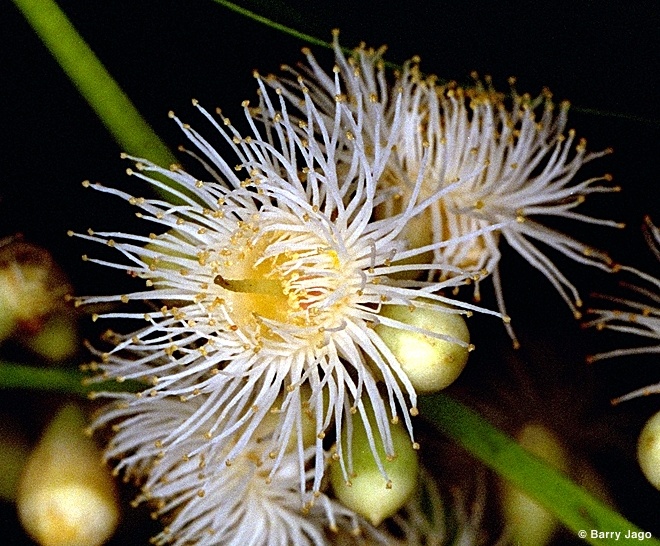
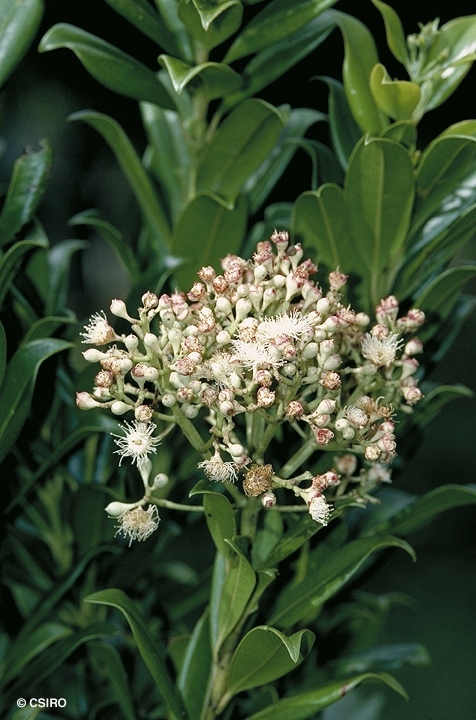
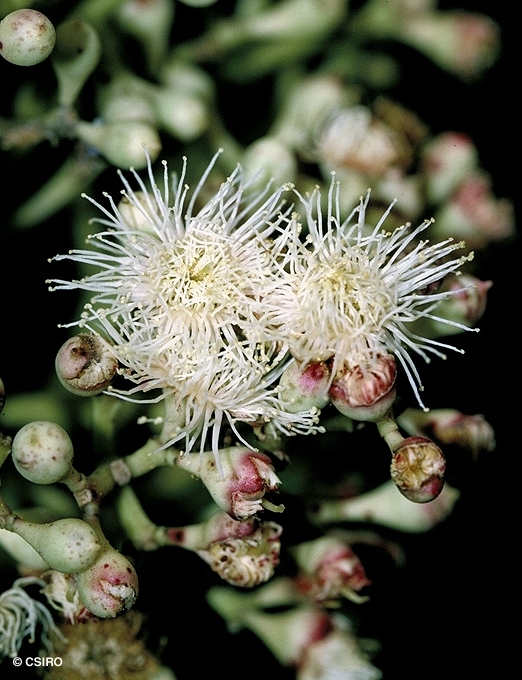
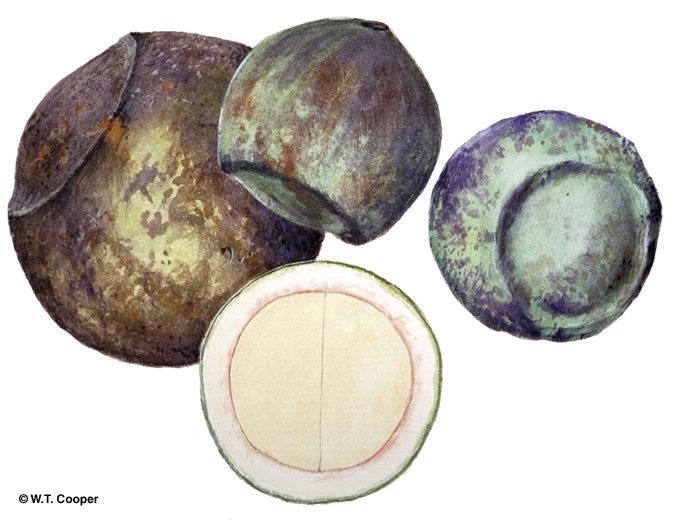
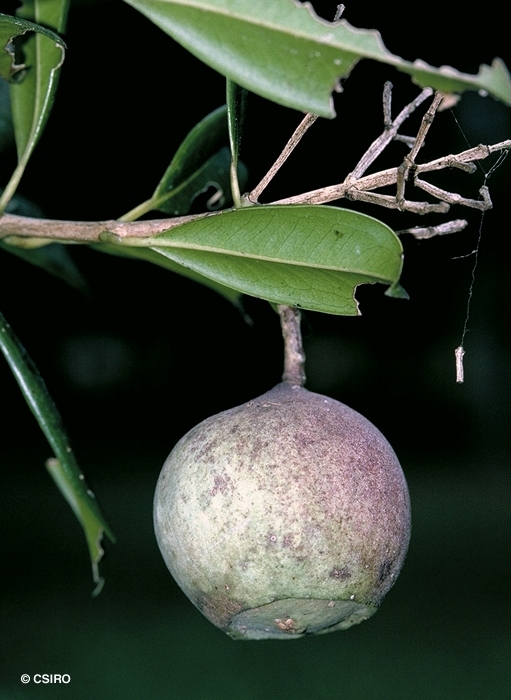

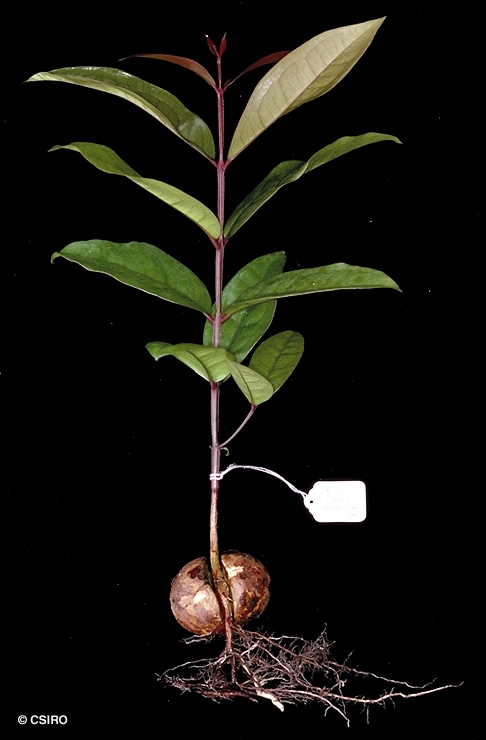

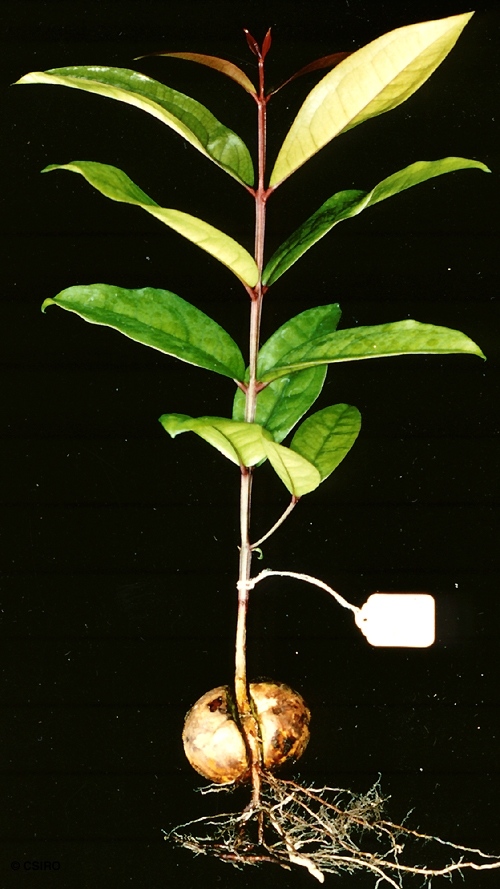
Hyland, B.P.M. (1983) Australian Journal of Botany Supplementary Series 9: 93.
Satinash, Grey; Grey Satinash; Yellow Satinash; Watergum
Prop roots or flying buttresses often present at the base of the stem.
Bracts deciduous, absent at anthesis. Calyx tube (hypanthium) + pedicel about 5-8 mm long, calyx tube (hypanthium) about 3.5-6 mm diam. Petals free or slightly attached to the calyptrate, rostrate calyx, variable in size and shape, about 3-4 mm diam., oil dots visible, up to 20 per petal, depending on petal size. Outer staminal filaments about 2-4.5 mm long, anthers usually wider than long, about 0.3 x 0.8 mm, opening in short +/- parallel slits, gland not visible. Ovules about 4-8 per locule, placentas central, ovules attached by the middle. Style about 4-7 mm long, rather stout, approximating the stamens.
Fruit colour variable, fruit frequently falling while still greenish, but apparently ripening to greenish brown, reddish brown and pinkish grey. Fruits attaining about 60-90 mm diam., globular, but with an apical tonsure-like section (resulting from the short but persistent calyx rim), calyx lobes absent, pericarp leathery but brittle, finely granular in texture. Seed solitary, attaining about 50 mm diam. or more, testa adhering to the pericarp but quite free from the uniformly textured cotyledons. Radicle central or basal.
Cataphylls about 5-7 pairs. At the tenth leaf stage: leaf blade +/- elliptic, apex acute or acuminate, base cuneate or obtuse, glabrous; oil dots just visible to the naked eye; lateral veins forming loops inside the intramarginal vein and almost forming a second intramarginal vein. Seed germination time 37 to 56 days.
This species produces a very popular and useful structural timber which is marketed as Grey Satinash, it is widely appreciated in North Queensland. Wood specific gravity 0.67-0.69. Hyland (1983).





